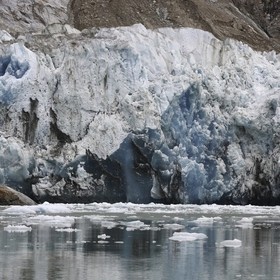

DebbieSalvesen
FollowI was on a sea mammal photography tour in Alaska when I photographed this Humpback Whale having fun doing all sorts of things like tail flipping, flipper waving...
Read more
I was on a sea mammal photography tour in Alaska when I photographed this Humpback Whale having fun doing all sorts of things like tail flipping, flipper waving, breaching, sky hopping, etc. It was my fourth time visiting Alaska. If you ever have the opportunity to go, don't hesitate! One key tip: bring protective RAIN gear for you AND your equipment. On this trip we were on a small, 6 person fishing boat for 8 hours a day for 4 days and it rained almost everyday. If you come prepared, you will LOVE Alaska!
Read less
Read less
Views
1092
Likes
Awards
Top Shot Award 21
Featured
Winner in Whale Tales Photo Challenge
Peer Award
Magnificent Capture
Top Choice
Outstanding Creativity
Superb Composition
Absolute Masterpiece
Superior Skill
All Star
Genius
Emotions
Impressed
Categories
Same photographer See allBehind The Lens
Discover more photos See all
Behind The Lens
Location
I was near Juneau, Alaska on a small fishing boat.Time
I think it was late afternoon. It had been raining all day, so time tends to blend together. I think it was mid afternoon when I captured this magnificent animal smacking its tail in and out of the water.Lighting
Lighting was just what nature provided. It was raining and overcast. When you photograph wildlife, you don't have time to control the lighting, so you have to make adjustments in the Manual position of your DSLR camera. It is also good to take a few shots of just the water and surroundings to make cursory adjustments while you are not trying to photograph a fleeting sighting of an animal enjoying its natural habitat.Equipment
I used a Canon EOS 5 D Mark III body with a Canon 100-400 mm lens. I had rented both of the updated versions of what I own so I was able to capture images at higher speed with more clarity and sharpness than I normally do. I had held my equipment because I was on a small fishing boat with other people in the rain, bopping up and down with the waves. A tripod would not have worked.Inspiration
It is my passion to photograph wildlife in their natural environment to teach young adults and children the importance of preserving our natural resources. I also want to inspire people to look up from their phones, tablets, and even watches, and notice the beauty that surrounds them every day. I want to encourage them to take an active role in protecting our fragile Earth.Editing
I am old school, so I don't believe in much post production manipulation, especially when the subject is nature or wildlife. I especially don't like it when brush strokes and textures are added since they make the animal or natural setting seem inanimate. It is acceptable if the photographer is submitting an image as digital art, but not in any contests which call for animals in the wild, live animals, or landscapes. With that in mind, I do only minimal adjustments such as cropping, AWB, and probably adjusting the vibrancy. I don't add or take anything out of an image and I don't stack. What you see is what I, the photographer, captured and not generated on a computer. It is important we portray the fragility and uniqueness of our planet in as real of a light as possible to educate people about our responsibility to conserve and protect it before we have permanently destroyed it.In my camera bag
I usually have two Canon camera bodies with a range of lenses. I will have one for landscape, one for mid depth of field, and one for distances. I also make sure I have MANY extra fully charged batteries, and cards. You do NOT want to experience a once-in-a-lifetime occasion and not have working batteries or a CF card!!! I also carry some protective gear for my equipment to survive the elements, such as in this case, rain, waves, banging against the ship as it rolled back and forth.Feedback
If you want to capture an animal in the wild, you need to practice your panning skills. The animal is NOT going to pose for you so you have to be able to focus in on it within a fraction of a second, or it is gone. Second most important skill is to learn how to photograph in either Manual or Aperture mode. You will not get the detail you want if you photograph using the Automatic setting. Third, and the one I continue to struggle with, is the proper balance of speed, exposure, and ISO to capture the image as clearly as possible without much noise. Another important factor is protecting your equipment from the elements. The final advice I have is to KEEP YOUR EYES OPEN!!! Don't chit chat or be on your phone. Constantly scan the horizon for the next exciting, yet fleeting, photo opportunity. You can talk when you are finished photographing for the day. Oh, one more thing, enjoy the experience and privilege nature and all life has given you.












































